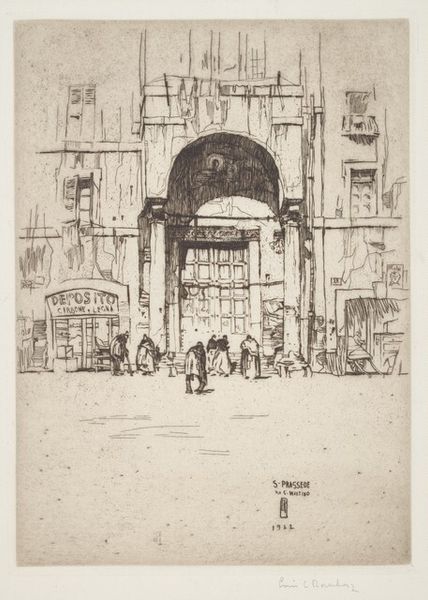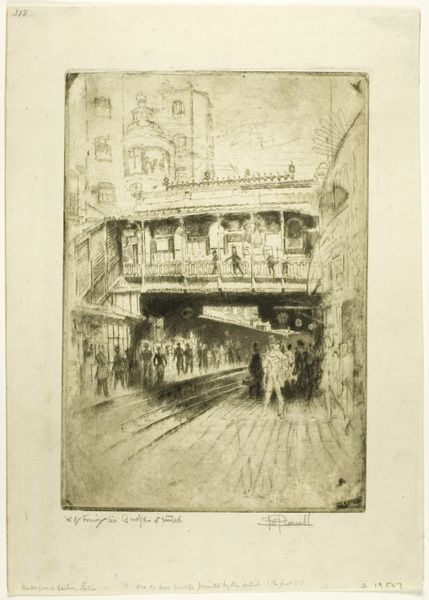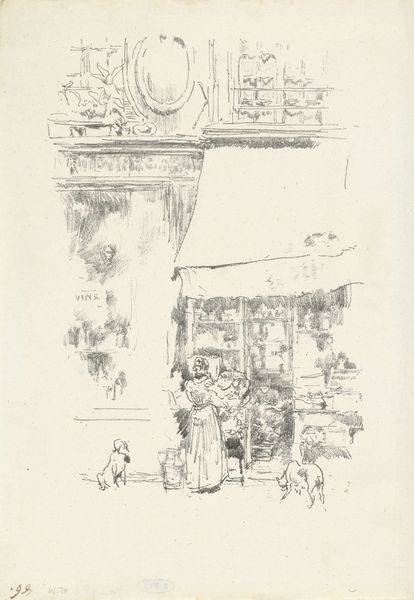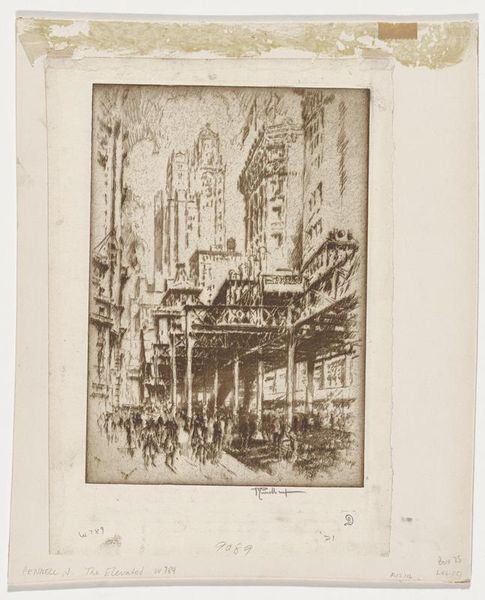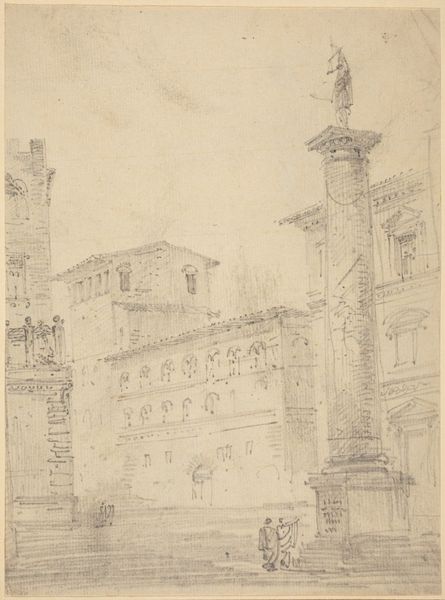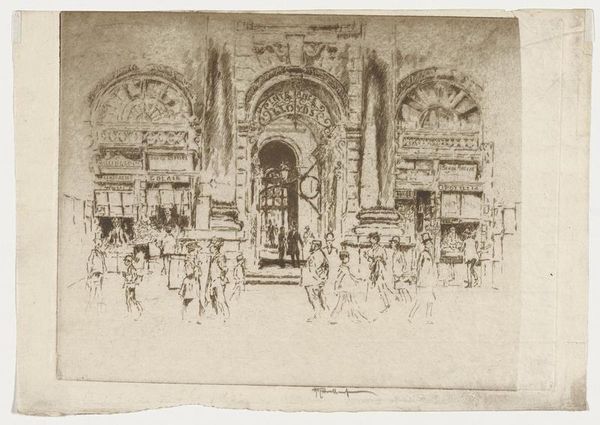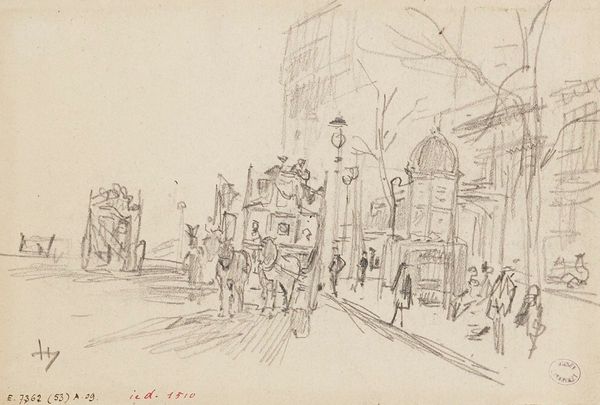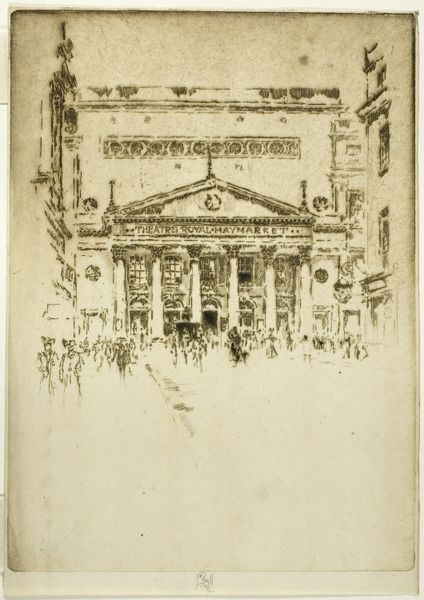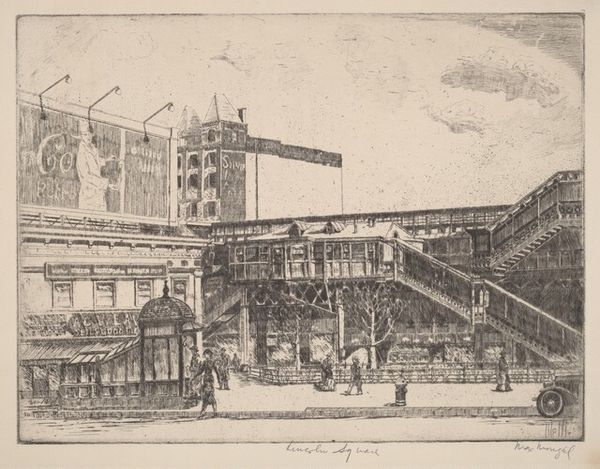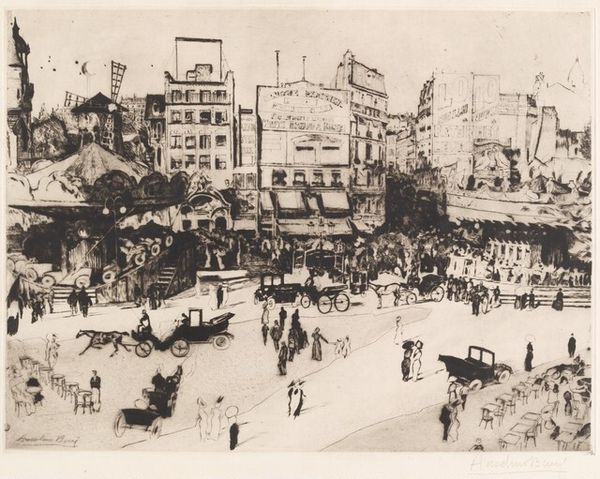
Copyright: Public Domain: Artvee
Curator: I am struck by the fluidity of this ink drawing—it’s almost vibrating with a nervous energy, isn't it? Editor: Indeed! Here we have James Abbott McNeill Whistler's "The Long Gallery, Louvre," created around 1894. It offers us a glimpse into the experience of art consumption during the late 19th century. Curator: It does more than that, I think. Look at how he captures the gestures, the ephemeral quality of people momentarily pausing before a painting. Consider the semiotic weight of that bowed head, the leaning figure--they indicate reflection, judgement, even reverence. It is quite evocative, wouldn't you say? Editor: Yes, the figures are deliberately posed but also, crucially, anonymized. The composition leads the eye not to individual faces or stories, but to the collection as a social space—a place where people enact cultural rituals around art. Curator: Notice also how the grand architecture, the domed ceiling and the rigid geometry of the gallery, contrast with the deliberately blurred shapes of the crowd and the brushwork; it suggests the psychological space in which the fleeting human awareness confronts enduring historical constructions. There is an implied continuity, almost a chain of cultural memory. Editor: Precisely. And the ease of line work hints at how Whistler and his Impressionist cohort approached their artistic environments and subjects; rapidly capturing a fleeting moment and how it might communicate with larger societal patterns. You have people engaging in the 'act' of observing art, within the symbolic and structural context of the Louvre. The Louvre itself is being historicized here! Curator: It is, at once, a symbol of aesthetic legacy and a site for social performance. The blurred background lends a kind of depth and, in a way, encapsulates the awe one might experience in such a massive place, reminding viewers about how imposing art can be. The composition is clever for evoking this dual feeling. Editor: It underscores the crucial role of institutions like the Louvre in shaping what and how we remember, not just aesthetically but culturally. It's fascinating how he managed to do it all in a seemingly casual ink sketch. Curator: So, perhaps the key lies in appreciating not just the "what" of the gallery, but the "how" it shapes collective consciousness. A very relevant insight in the modern world. Editor: Indeed, a potent reflection on the act of seeing and the structures that frame our views.
Comments
No comments
Be the first to comment and join the conversation on the ultimate creative platform.

